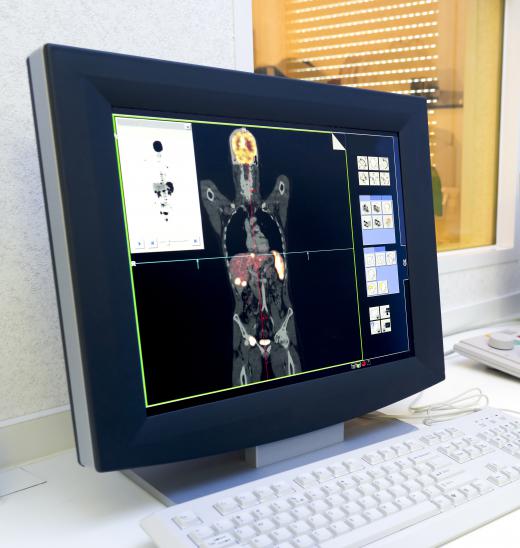What is Antimatter?
Antimatter is at the heart of science fiction novels and shows such as Star Trek, but in reality, its existence in our universe is not fiction at all. As its name implies, this substance is the opposite of matter and was discovered in the first half of the 20th century. It continues to intrigue physicists and science fiction fans alike.
Matter, the stuff that all physical things are composed of, is made of atoms that are themselves composed of particles such as protons, electrons, and neutrons. Similarly, antimatter contains antiparticles that are called antiprotons, positrons, and antineutrons, respectively. Particles and antiparticles have the same mass but opposite charges; for example, an electron is negatively charged and its opposite, the positron, is an electron with a positive charge. Antimatter is an umbrella term that refers to the culmination of these antiparticles.

When matter and antimatter come into contact with one another, they are both annihilated. This releases a large amount of energy. Very generally, the big bang theory of the creation of the universe involves the large scale encounter of matter and antimatter.
Antimatter is not significant on Earth unless it is created artificially in a physics laboratory or similar setting. Scientists have been able to create relatively small amounts in the form of antihydrogen. It briefly occurs naturally as a result of cosmic rays penetrating the atmosphere as well as the breakdown of radioactive materials. Within a matter of nanoseconds, antiparticles and particles meet and are destroyed, which is why antiparticles are not very common on Earth. In space, however, it is much more common and observable through the use of finely tuned instruments.

The ability to artificially create antimatter is very important in medical science, specifically in Positron Emission Tomography (PET) scans. A PET scan uses the byproducts of the annihilation of the electron and the positron — gamma photons — to test for and diagnose cancer. Antimatter is used in some other forms of radiation technology as well.
In theory, antimatter could be used as a renewable and completely efficient source of fuel. The time, effort, and cost of creating it, however, currently outweighs the benefit of the energy that it could potentially produce. In the future, when it is better understood, it may in fact become a plausible solution for our current energy crisis as it relates to environmental degradation.
AS FEATURED ON:
AS FEATURED ON:












Discussion Comments
I was also surprised that Antimatter can be used as a source of energy, can't we use Antimatter to create negative energy so that we can create a stable warp field?
@irontoenail - Maybe no problems... but I think that they would have to be very careful with this kind of research. I don't know how they contain anti-matter at the moment, but if even a small amount comes into contact with just about anything, it will make a huge explosion.
From what I understand it is comparable to a nuclear explosion, although probably without the after effects. Not the sort of thing you want to experiment with.
On the other hand, solving the energy crisis would be so amazing.
In science fiction anti-matter is almost always used as an energy source to justify the vast amounts of power that spaceships would probably use, particularly when they travel at "warp" speed or an equivalent.
It's supposed to be the reaction of anti-matter and matter when they come into contact that creates energy. A controlled explosion, like using gas in an engine.
I didn't realize they were actually looking into making this a plausible source of power. If they ever manage it, the energy needs of the world could be met with no problems.
I think that
@Ceilingcat - Medical imaging has become much more high tech in the last few years, although not all of them feature concepts used in science fiction. My personal favorite that doesn't involved the antimatter particle is the CT scan.
CT scans are also called x-ray computed tomography and they basically form a three dimensional image from a series of x-rays. This makes it a lot easier for doctors to visualize what is going on inside the body and make a diagnosis.
Pretty awesome but a bit boring when compared to images made with antimatter explosions!
I had no idea antimatter existed outside of science fiction! Growing up I was a huge Star Trek fan and I'm pretty thrilled to learn antimatter is real and has real life applications. I've actually had a PET scan before and I think I would have been a lot more entertained had I know an antimatter explosion was involved.
Post your comments